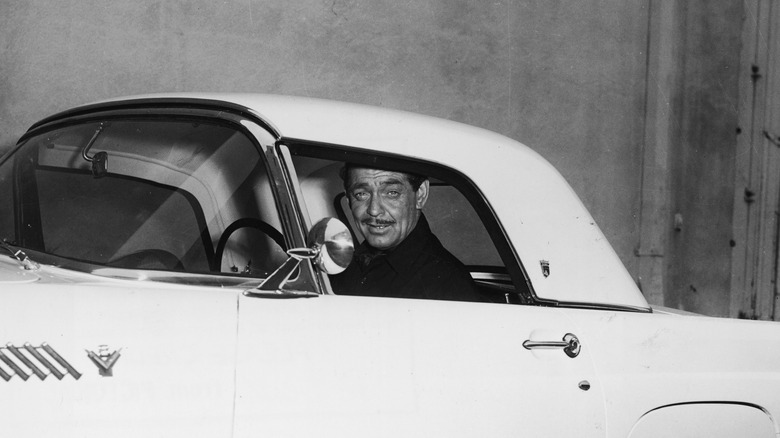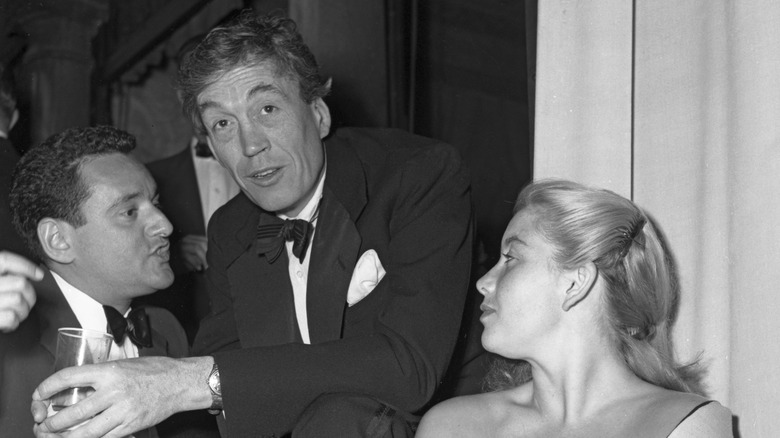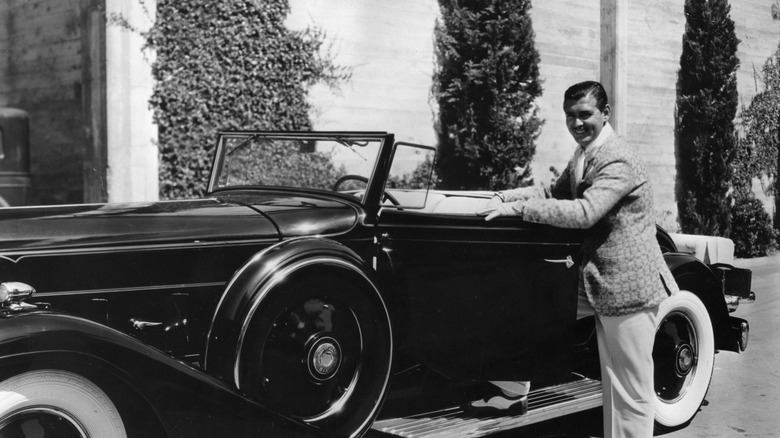The Dark Myth That Connects Clark Gable To A 1933 Hit-And-Run
Clark Gable was a beloved actor of his time. Dubbed "The King of Hollywood," his career spanned three decades, and even early on, he had enough clout that people believed studio executives would cover for him when he accidentally killed someone. The rumor was that Gable was drunk behind the wheel of his car when he hit Brazilian dancer Tosca Roulien as she walked into the road. He sped away from the accident, leaving Roulien to die in the street. Like with any rumor, several layers to Gable's own doings would fuel a conspiracy theory that put the blame squarely on his shoulders, but the real story didn't involve Gable at all. Roulien's death was caused by John Huston.
Nearly a decade before he kicked started the film noir genre while in the director's chair during the filming of "The Maltese Falcon," Huston was a struggling screenwriter trying to make his way in Depression-era Hollywood. Huston had also developed quite a reputation of drinking too much and had several drunken incidents while behind the wheel of a car. The "Prizzi's Honor" director had been jailed after he rammed his vehicle into a parked car while intoxicated. The book "Guest Parking: Zita Johann" told of another incident in which Huston was drunk again at the helm, this time crashing into a car palm tree while actress Zita Johann rode in the passenger seat, causing her head to slam into the windshield.
After two strikes, it wouldn't take much longer for Huston's luck to run out. In September 1933, Huston was involved in an accident that resulted in a fatality. His biography, "John Huston: Courage and Art," details how Huston was barreling down Sunset Boulevard when a pedestrian suddenly walked in front of his car. The woman was Roulien, and she had emerged from in between two parked cars and was immediately struck by Huston. Roulien was bounced off the windshield and thrown an estimated 30 feet. Huston responded by slamming on his brakes, narrowly avoiding running her over. But the damage had been done.
Rumors would spread that it was Clark Gable who killed Roulien
Huston was fully exonerated by a grand jury. He had been sober and he wasn't speeding, and Roulien jaywalked in front of him. The scandalous story from Old Hollywood would soon begin a conspiracy theory though that Huston wasn't at the wheel, but was covering for another. The talk around Tinsel Town was that Clark Gable, already a studio darling for MGM, was the man responsible. Enter Eddie Mannix, MGM's "fixer."
Mannix, who would later be vice president of the studio, had developed deep connections with police, physicians, and public officials in and around Los Angeles. According to The Huffington Post, it was Mannix who was rumored to have used his influence to find a fall guy for the wreck. The outlet reports that he supposedly found Huston and offered him a sizable bribe to take the blame for Roulien's death. Huston obliged, sparing Gable a possible prison sentence for manslaughter and the studio a great deal of embarrassing publicity.
The only problem with the above accounting of events is that they simply are not true. Huston was absolutely the man driving the car that struck Roulien, an incident that would haunt him to the point that he sought respite in Europe for years after her death. Like with any rumor, several layers to Gable's own doings would fuel a conspiracy theory that put the blame squarely on his shoulders.
How did the Clark Gable rumor get started?
How could such a rumor get started? Snopes did a deep dive into the conspiracy theory and assembled several possibilities. Gable, like Huston, had a reputation for being problematic with alcohol. The website believes that two stories involving Gable were twisted and conflated into one patently false story of the actor causing the death of Roulien during a hit-and-run.
The first story happened in 1933 just months before Roulien was killed. Gable had to be hospitalized for a severe infection in his gums, resulting in the removal of his teeth. This procedure and a subsequent emergency gallbladder surgery kept Gable out of the studio for months. This halted production of the film "Dancing Lady," angering studio executives. Gable had no work lined up at MGM as a result and was "loaned" to Columbia Pictures so his contract could be fulfilled.
The second incident took place in 1945. Gable was driving on Sunset Boulevard and was forced to swerve out of the way of a reckless driver who was going to hit him head-on. Gable crashed into a tree and had to be hospitalized. The car that Gable barely missed a collision with did not stop.
Snopes reckons that over the years, Gable's absence from the studio for months in 1933 was thought to be from his recovery from a car crash. This, combined with the true story of Gable hitting a tree with his car 12 years later, morphed two incidents into one that blamed Gable for a hit-and-run that never happened.


